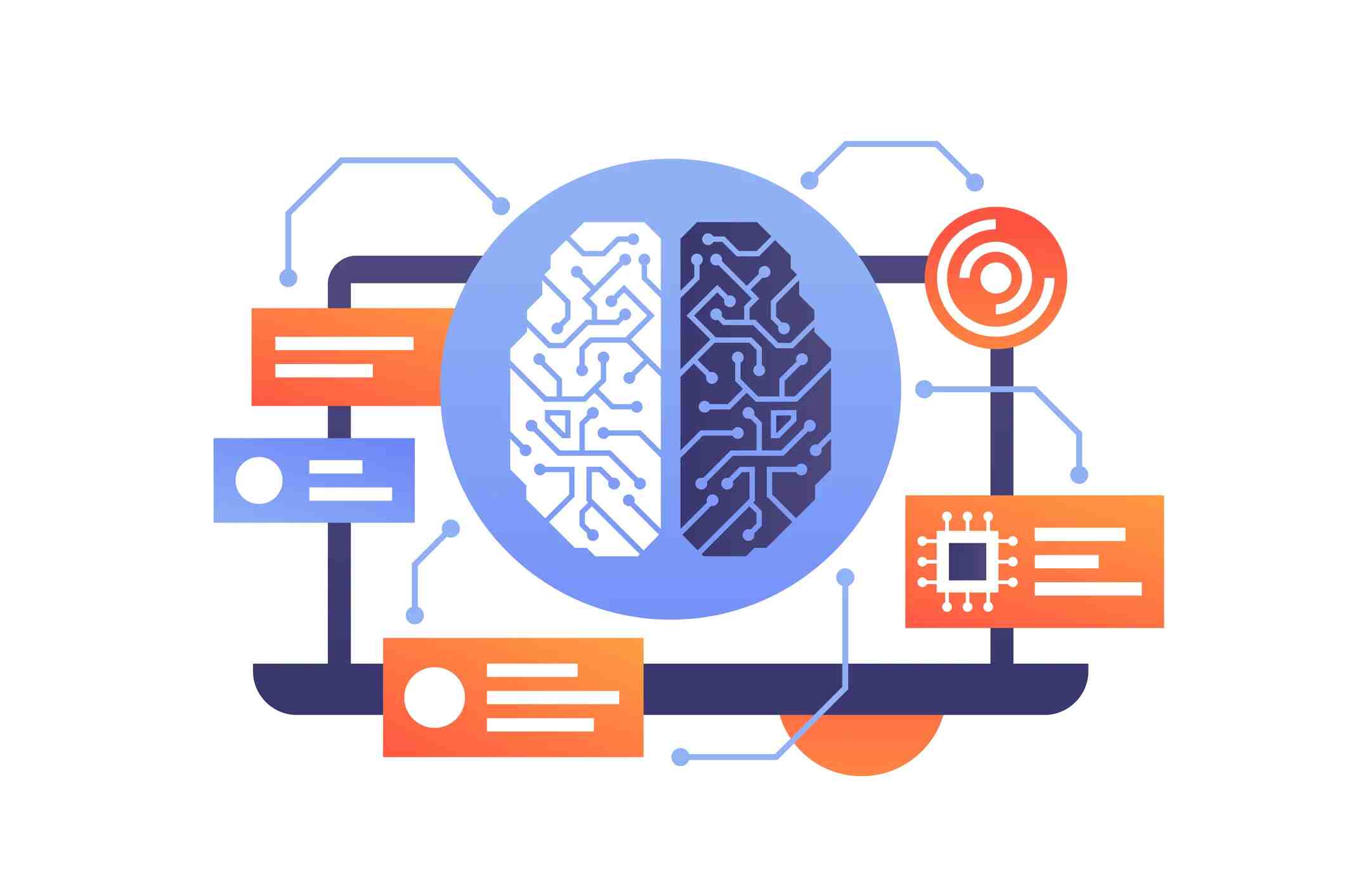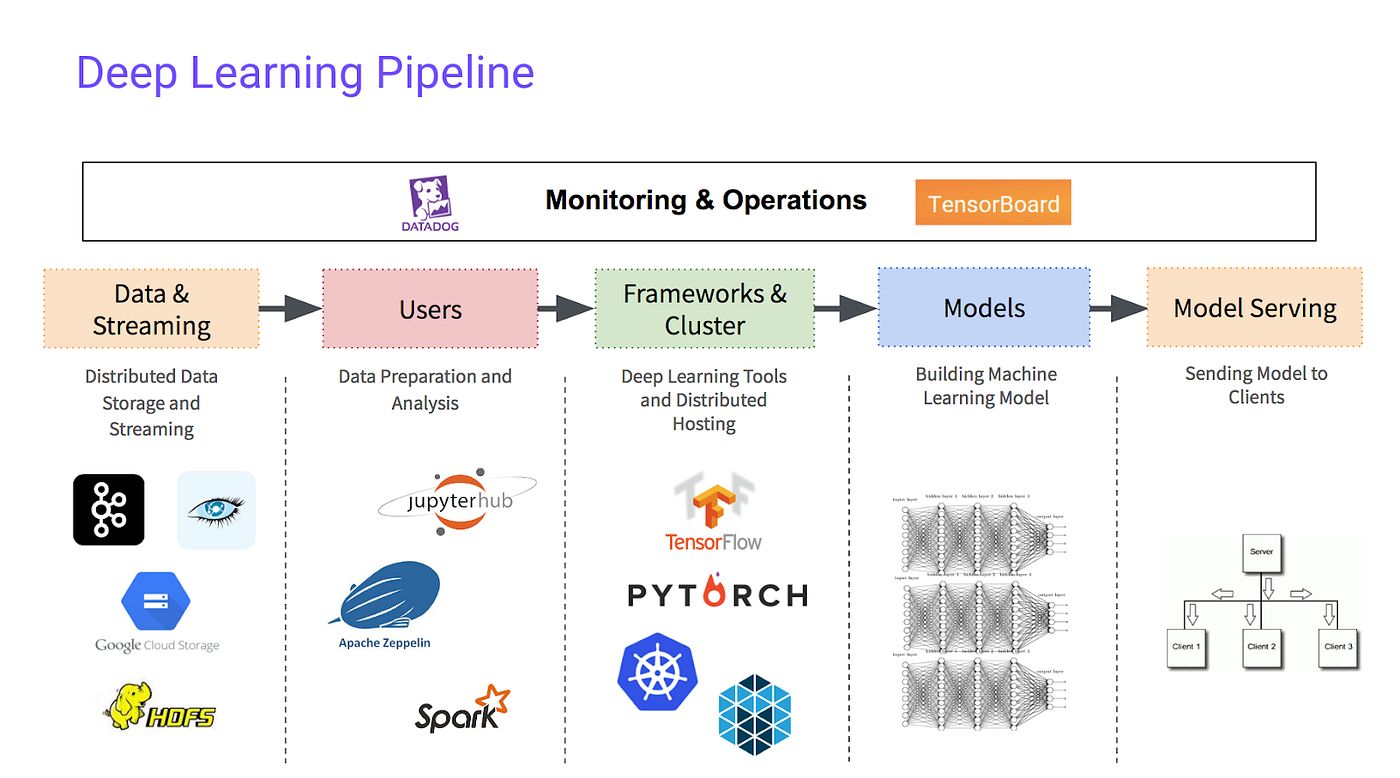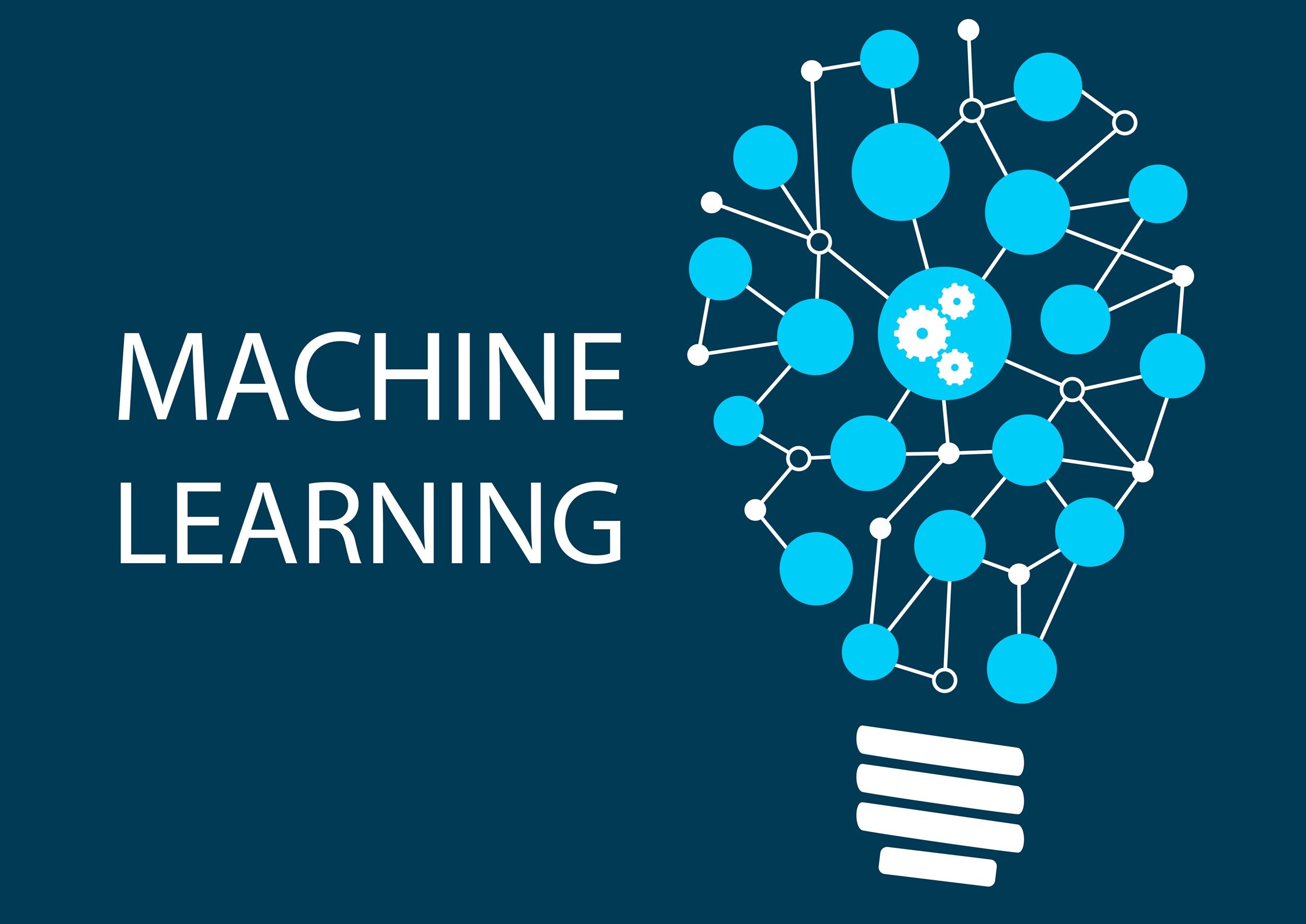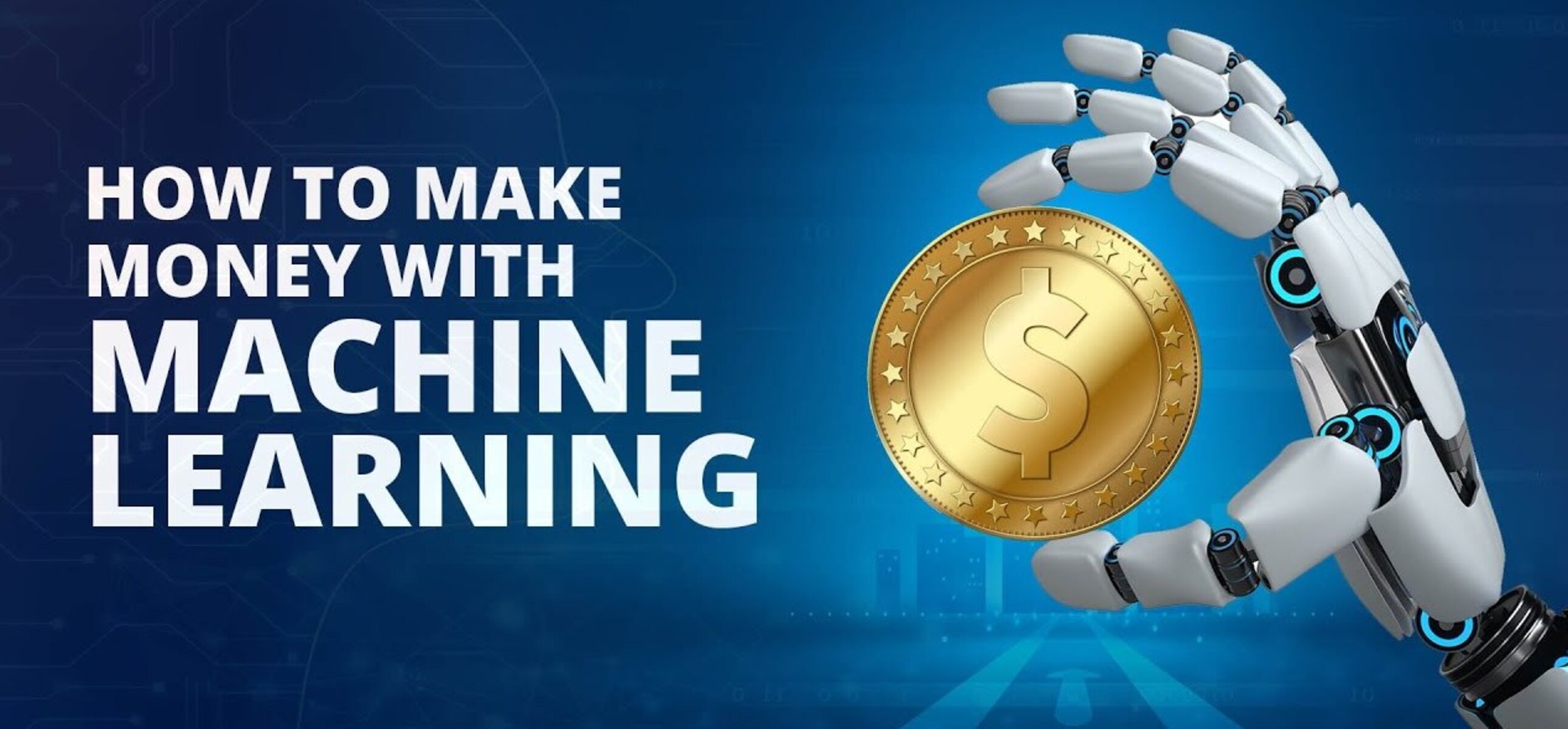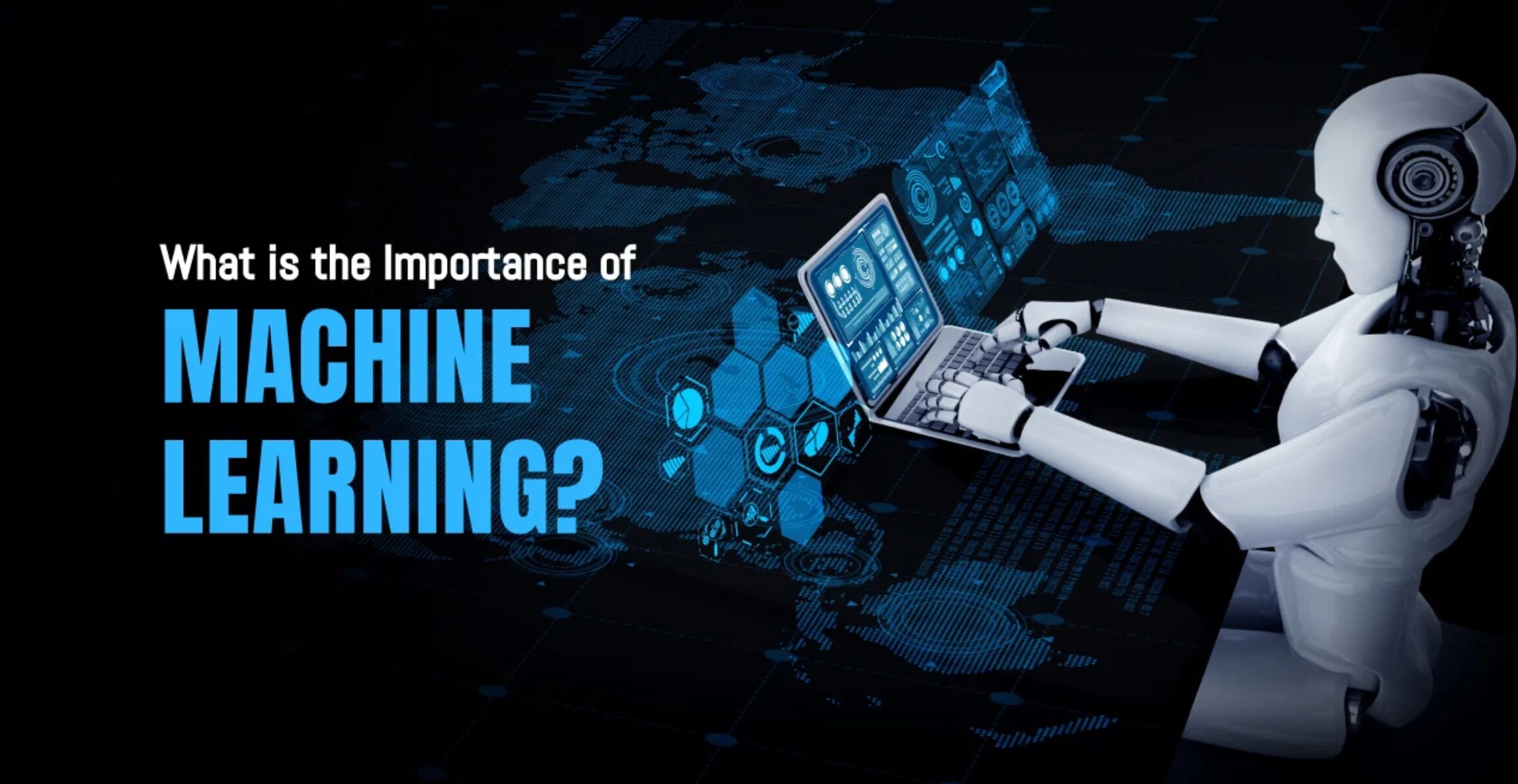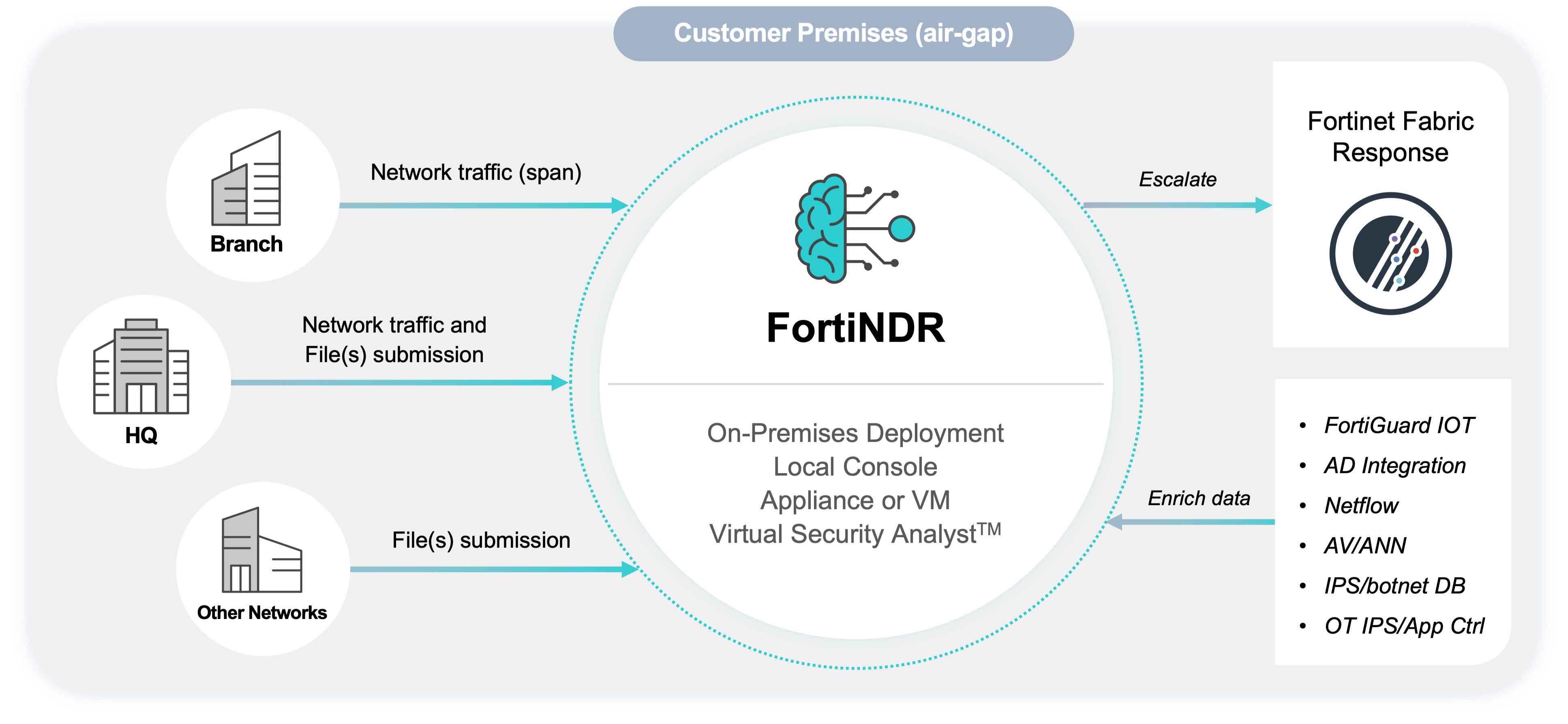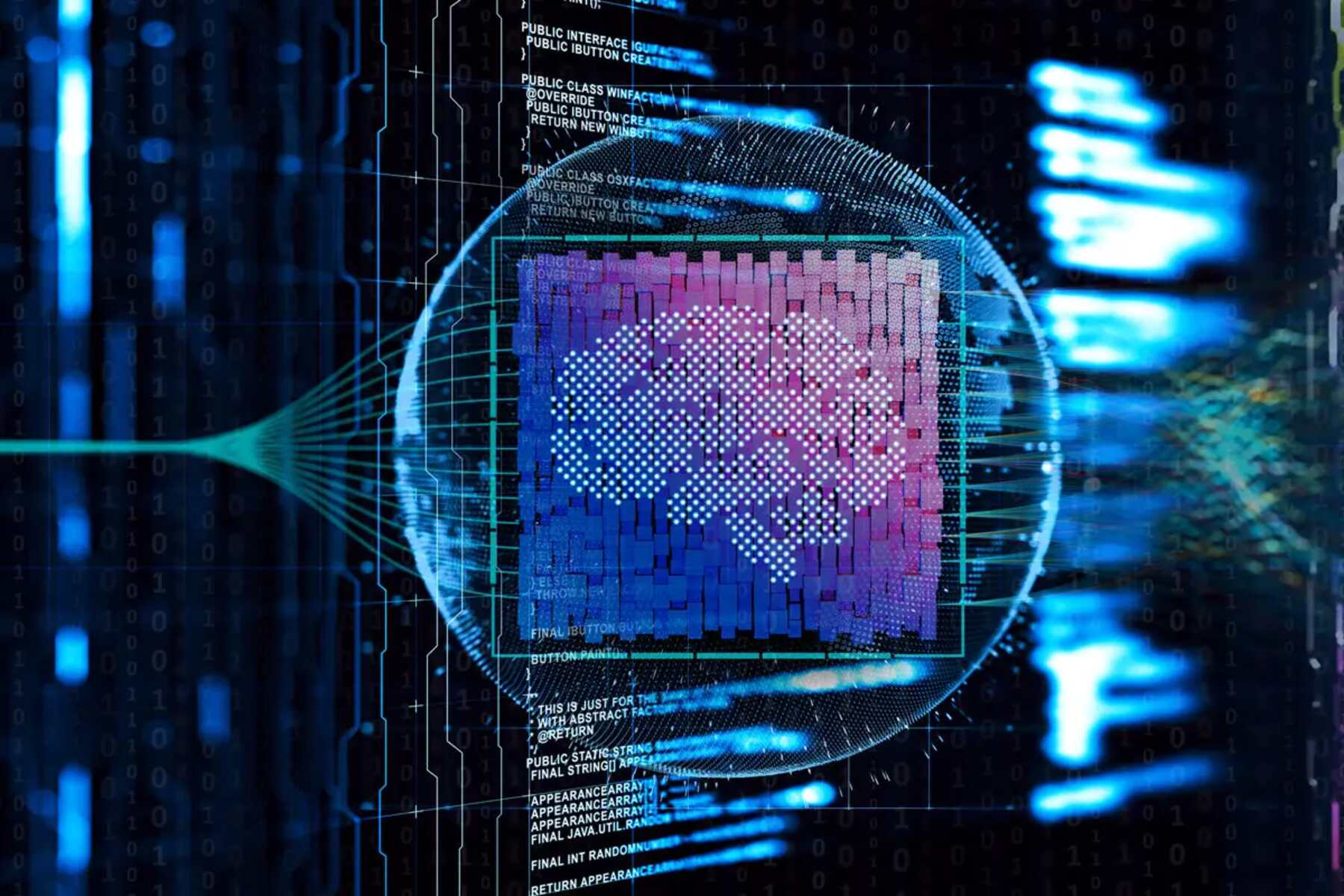Introduction
Machine learning has revolutionized various industries, from healthcare to marketing. It has become a driving force behind many technological advancements, enabling computers to learn from data and make accurate predictions or decisions without being explicitly programmed. At the heart of machine learning lies the machine learning model.
A machine learning model is a mathematical representation or algorithm that is capable of learning patterns and structures from data. It forms the core of the machine learning process, allowing computers to automatically analyze and interpret complex datasets. By utilizing machine learning models, businesses and organizations can uncover valuable insights, automate tasks, and optimize processes.
In order to understand how machine learning models work, it is essential to grasp the fundamental concepts and components involved. This article will delve into the nuances of machine learning models, explore their different types, and provide insights into their applications.
Throughout this article, we will explore the various types of machine learning models, including supervised learning, unsupervised learning, semi-supervised learning, and reinforcement learning models. Each of these models has its own characteristics, strengths, and applications.
Additionally, we will discuss the popular machine learning models that have gained significant attention and recognition in the field. These models, such as linear regression, decision trees, support vector machines, and neural networks, have proven to be effective in solving a wide range of real-world problems.
By understanding the fundamentals of machine learning models, you can begin to harness their power and unlock the immense potential they offer. Whether you are a data scientist, business owner, or simply curious about the world of machine learning, this article will provide you with a comprehensive overview of machine learning models and their significance in the modern era.
Definition of a Machine Learning Model
A machine learning model can be defined as a mathematical or computational representation that enables a computer system to learn from data and make accurate predictions or decisions without explicit programming instructions. It is the backbone of the machine learning process, as it captures the underlying patterns, relationships, and trends within a dataset and uses this information to make predictions or take actions.
A machine learning model essentially learns from historical data by identifying patterns and extracting insights. It uses these insights to generalize and make predictions or decisions on new, unseen data. The model is trained using a learning algorithm that adjusts its internal parameters based on the input data, striving to minimize errors in its predictions.
One of the key characteristics of a machine learning model is its ability to improve its performance over time through a process known as iterative learning. As the model receives more data and continues to learn, it refines its parameters and becomes more accurate in making predictions or taking actions.
Another important aspect of a machine learning model is its generalization capability. It should not only perform well on the training data but also be able to make accurate predictions on unseen or test data. A good machine learning model strikes a balance between capturing the underlying patterns in the data and avoiding overfitting, where it becomes too specific to the training data and fails to generalize well.
Machine learning models can be classified into various types based on the learning approach, such as supervised learning, unsupervised learning, semi-supervised learning, and reinforcement learning. Each type has its own characteristics and is suitable for different types of problems and datasets.
Overall, a machine learning model is a powerful tool that allows computers to analyze complex data, extract meaningful insights, and make accurate predictions or decisions without explicit programming. It has numerous applications across industries and is continuously advancing, bringing innovation and automation to various domains.
How a Machine Learning Model Works
Machine learning models operate based on the principle of learning from data. They follow a series of steps to analyze and interpret input data, generalize patterns, and make predictions or take actions. Understanding how a machine learning model works is fundamental to leveraging its capabilities effectively. Let’s explore the key steps involved.
Data Collection: The first step in using a machine learning model is to gather relevant and high-quality data. This data serves as the foundation for training and evaluating the model’s performance. The dataset should be representative of the problem domain and contain a sufficient number of instances.
Data Preprocessing: Once the data is collected, it often needs to be cleaned and preprocessed to ensure its quality and compatibility with the machine learning algorithms. This step involves tasks such as removing duplicates, handling missing values, normalizing or scaling features, and encoding categorical variables.
Training the Model: After preprocessing the data, the machine learning model is trained using a training algorithm. This algorithm adjusts the internal parameters of the model based on the input data, aiming to minimize the discrepancy between the model’s predictions and the actual output values. The model learns the underlying patterns and relationships present in the training data.
Evaluating the Model: Once the model is trained, it needs to be evaluated to assess its performance. This evaluation is typically done using a separate set of data called the validation or test set. The model’s predictions on the test set are compared to the ground truth values, and metrics such as accuracy, precision, recall, or mean squared error are calculated to measure the model’s performance.
Model Tuning: If the model’s performance is not satisfactory, various techniques can be used to improve it. This involves adjusting hyperparameters, which are specific settings that control the behavior of the model, such as learning rate or regularization strength. Model tuning helps optimize the model’s performance and generalization capabilities.
Deployment and Prediction: Once the model is trained and tuned, it can be deployed to make predictions or take actions on new, unseen data. The trained model takes input data, processes it, and produces the desired output, whether it’s predicting a class label, estimating a numerical value, or recommending certain actions.
Monitoring and Maintenance: Machine learning models are subject to changes in the underlying data distribution and may suffer from performance degradation over time. Thus, it is important to continuously monitor the model’s performance and retrain or update it as necessary to ensure its accuracy and relevance.
By following these fundamental steps, a machine learning model learns patterns and relationships in data, enabling it to make accurate predictions or take actions on new data. This iterative process of training, evaluating, tuning, and deploying the model allows for continuous improvement and adaptation to changing circumstances.
Components of a Machine Learning Model
A machine learning model consists of several key components that work together to process input data, learn from it, and make predictions or decisions. Understanding these components is essential for comprehending the inner workings of a machine learning model. Let’s explore the major components of a machine learning model:
Input Data: The input data, also known as features, are the variables or attributes that are fed into the machine learning model. These data points serve as the basis for the model to learn and make predictions or decisions. The quality and relevance of the input data greatly impact the model’s performance.
Feature Extraction: Feature extraction involves transforming the raw input data into a format that is suitable for the machine learning algorithm. This step may include techniques such as dimensionality reduction, where irrelevant or redundant features are eliminated, or feature engineering, where new features are created to enhance the model’s performance.
Learning Algorithm: The learning algorithm is the core component that enables the model to learn from the input data. It defines the rules and mathematical operations that the model uses to adjust its internal parameters and minimize the error between its predictions and the actual output. Different types of learning algorithms are available, such as gradient descent, decision trees, support vector machines, and neural networks, each suited for specific types of problems.
Model Parameters: The model parameters are the internal variables that the learning algorithm adjusts during the training process. These parameters capture the relationships and patterns in the input data. For example, in linear regression, the model parameters correspond to the slope and intercept of the regression line.
Loss Function: The loss function, also known as the cost function or objective function, measures the discrepancy between the predicted output and the true output values. The learning algorithm aims to minimize this loss function by adjusting the model’s parameters. Different loss functions are used depending on the type of problem, such as mean squared error for regression or cross-entropy loss for classification.
Output: The output of a machine learning model is the prediction or decision made based on the input data. This output can take various forms, depending on the problem at hand. For instance, it could be a class label for classification problems, a probability distribution, a numerical value for regression, or a recommended action.
Evaluation Metrics: Evaluation metrics quantify the performance of the machine learning model and provide insights into its accuracy and generalization capabilities. These metrics vary depending on the problem type and may include accuracy, precision, recall, F1 score, Mean Absolute Error (MAE), or Root Mean Squared Error (RMSE).
Regularization: Regularization is a technique used to prevent overfitting in machine learning models. It adds a penalty term to the loss function that discourages overly complex models and promotes simplicity. Regularization helps in controlling model complexity and ensures better generalization to unseen data.
By understanding these components, you gain a deeper understanding of how a machine learning model functions. Each component plays a crucial role in capturing and processing the input data, learning from it, and producing accurate predictions or decisions. A well-designed and properly tuned model with the right components can provide valuable insights and drive intelligent decision-making.
Types of Machine Learning Models
Machine learning models can be classified into several distinct types based on the learning approach they employ. Each type has its own characteristics, learning algorithms, and applications. Understanding the different types of machine learning models is crucial for selecting the most suitable approach for a given problem. Let’s explore the main types:
Supervised Learning Models: In supervised learning, the machine learning model is trained on a labeled dataset, where each instance has both input features and corresponding output labels. The model learns from this data to make predictions or classify new, unseen instances. Examples of supervised learning models include linear regression, decision trees, support vector machines, and neural networks.
Unsupervised Learning Models: Unsupervised learning models are trained on unlabeled data, where the input features are provided without any corresponding output labels. The goal of unsupervised learning is to discover inherent patterns, structures, or groupings within the data. Clustering algorithms, such as K-means clustering and hierarchical clustering, and dimensionality reduction techniques, like Principal Component Analysis (PCA), are common examples of unsupervised learning models.
Semi-Supervised Learning Models: Semi-supervised learning models leverage both labeled and unlabeled data for training. The model learns from the labeled data to make predictions or classifications, while also utilizing the unlabeled data to extract additional information or improve its performance. This approach is particularly useful when acquiring labeled data is expensive or time-consuming.
Reinforcement Learning Models: Reinforcement learning models interact with an environment and learn through trial and error. The model takes actions in the environment, receives feedback in the form of rewards or penalties, and adjusts its behavior to maximize the cumulative reward over time. Reinforcement learning is commonly used in fields such as robotics, game playing, and autonomous systems.
Deep Learning Models: Deep learning models are a subcategory of neural networks that utilize multiple layers of interconnected nodes, known as artificial neurons, to learn intricate patterns in data. Deep learning models have gained significant attention and achieved remarkable success in various domains, including image and speech recognition, natural language processing, and generative modeling.
Each type of machine learning model offers distinct advantages and is suited for different types of problems. The choice of the appropriate model type depends on factors such as the availability of labeled data, the complexity of the problem, the desired level of interpretability, and the specific requirements of the application.
By understanding and harnessing the capabilities of different types of machine learning models, data scientists and practitioners can effectively apply machine learning techniques to tackle a wide range of real-world problems and extract valuable insights from complex datasets.
Supervised Learning Models
Supervised learning models are a type of machine learning model that learns from labeled training data to make predictions or classify new, unseen instances. In supervised learning, the dataset contains input features along with corresponding output labels, which serve as the ground truth for the model to learn from. This type of learning is widely used in various domains and can solve both regression and classification problems.
Regression Models: Regression models are used to predict a continuous numerical value based on input features. Linear regression is a commonly employed regression model that aims to find the best-fit line that minimizes the difference between the predicted and actual values. Other regression models, such as polynomial regression, decision trees, and support vector regression, can also be utilized to capture more complex relationships in the data.
Classification Models: Classification models are used to categorize data into predefined classes or categories. In classification tasks, the output labels are discrete, such as binary (e.g., positive/negative) or multiclass (e.g., cat/dog/bird). Commonly used classification algorithms include logistic regression, decision trees, random forests, support vector machines, and neural networks.
Supervised learning models train on the labeled data by using a learning algorithm that adjusts the model’s parameters to minimize the discrepancy between the predicted and true output values. Once trained, the model can make predictions or classify new, unseen instances with a certain level of accuracy. The performance of supervised learning models is often evaluated using metrics such as accuracy, precision, recall, or mean squared error, depending on the specific problem type.
Supervised learning models have widespread applications, including sentiment analysis, fraud detection, recommendation systems, medical diagnosis, and stock market prediction. These models enable businesses to make data-driven decisions, automate tasks, and gain valuable insights from large datasets.
It is worth noting that the success of supervised learning models hinges on the availability of high-quality labeled data. Collecting and annotating such data can be time-consuming and resource-intensive. However, with advancements in data collection techniques and the availability of labeled datasets, supervised learning continues to drive innovations in artificial intelligence and machine learning.
Overall, supervised learning models are a powerful tool for solving a wide array of prediction and classification problems. They leverage labeled data to learn patterns and relationships, providing accurate predictions and valuable insights. With continuous advancements in algorithms and computing power, supervised learning remains a fundamental and effective approach in the field of machine learning.
Unsupervised Learning Models
Unsupervised learning models are a type of machine learning model that learns from unlabeled data, where the input features are provided without any corresponding output labels. Unlike supervised learning, the goal of unsupervised learning is not to make predictions or classifications but to discover inherent patterns, structures, or groupings within the data.
Clustering Models: Clustering is a common unsupervised learning technique where similar data points are grouped together based on their inherent similarities. The goal is to identify natural clusters or subgroups within the data. Algorithms such as K-means clustering, hierarchical clustering, and DBSCAN (Density-Based Spatial Clustering of Applications with Noise) are commonly used for this purpose.
Dimensionality Reduction Models: Dimensionality reduction is another important task in unsupervised learning. It aims to reduce the number of input features while preserving essential information. Techniques like Principal Component Analysis (PCA), which identifies the most informative combination of features, and t-SNE (t-Distributed Stochastic Neighbor Embedding), used for visualizing high-dimensional data, are commonly utilized for dimensionality reduction.
Unsupervised learning models explore the underlying structure and relationships in data without any labeled guidance. By identifying patterns, similarities, or dissimilarities within the data, these models provide valuable insights and enable businesses to make data-driven decisions.
Unsupervised learning has numerous applications in various domains. In customer segmentation, clustering models can be used to identify different customer segments based on their purchasing behavior, helping businesses target specific segments with personalized marketing campaigns. In anomaly detection, unsupervised learning models can identify abnormal patterns or outliers in data, enabling fraud detection or system monitoring.
Unsupervised learning also plays a crucial role in exploratory data analysis, where data scientists use clustering or dimensionality reduction techniques to gain deeper insights into the data. By visualizing the relationships or groupings within the data, researchers can uncover hidden patterns or uncover previously unknown information.
One limitation of unsupervised learning is the subjective interpretation of the results. Since there are no predefined output labels, the evaluation of unsupervised learning models is more challenging and relies heavily on the domain expertise of the user. However, unsupervised learning remains a powerful tool for uncovering hidden structures and patterns in large and complex datasets, opening up new possibilities for data exploration and knowledge discovery.
Overall, unsupervised learning models offer valuable insights and enable businesses to discover patterns and structures hidden within their data. By leveraging these models, organizations can gain a deeper understanding of their data, identify meaningful clusters or subgroups, and make informed decisions based on the intrinsic information present in the data.
Semi-Supervised Learning Models
Semi-supervised learning models are a type of machine learning model that leverages both labeled and unlabeled data for training. Unlike supervised learning, where the entire dataset is labeled, semi-supervised learning models can incorporate the additional information provided by the unlabeled data to enhance their performance and generalize better to unseen instances.
Semi-supervised learning bridges the gap between the limited availability of labeled data and the abundance of unlabeled data. The labeled data serves as the basis for the model to learn from, while the unlabeled data provides additional information and helps capture the underlying patterns or structures in the data.
One common approach in semi-supervised learning is to use labeled data to guide the learning process and enable the model to learn from the unlabeled data. For example, a small subset of labeled data can be used to train a supervised learning model, and then the model can leverage the unlabeled data to refine its predictions or classifications.
Semi-supervised learning has several advantages. It can significantly improve the performance of machine learning models, especially in scenarios where obtaining labeled data is expensive or time-consuming. By utilizing the abundant unlabeled data, these models can learn more effectively and generalize better to new instances.
Semi-supervised learning is particularly useful in situations where obtaining large amounts of labeled data is challenging or costly. For example, in speech recognition, transcribing audio data can be labor-intensive. By leveraging unlabeled data in combination with a small labeled dataset, semi-supervised learning models can achieve higher accuracy with less effort.
Despite its benefits, semi-supervised learning also poses some challenges. One major challenge is the potential presence of noise or incorrect labels in the unlabeled data. Since there are no ground truth labels for the unlabeled data, it’s crucial to ensure the quality and reliability of the data used in the training process.
Various algorithms and techniques have been proposed in the field of semi-supervised learning, including self-training, co-training, generative models, and graph-based methods. Each approach has its own strengths and weaknesses, and the choice of the algorithm depends on the specific requirements of the problem and the nature of the data.
Semi-supervised learning models offer a promising approach to harnessing the power of both labeled and unlabeled data. By leveraging the additional information provided by the unlabeled data, these models can achieve higher accuracy and better generalize to new, unseen instances, even with limited labeled data available.
Overall, semi-supervised learning models combine the advantages of both supervised and unsupervised learning, providing a practical and efficient approach to learning from both labeled and unlabeled data. These models continue to be an active area of research, pushing the boundaries of what can be achieved with limited labeled data in machine learning.
Reinforcement Learning Models
Reinforcement learning models are a type of machine learning model that learns through interaction with an environment. In reinforcement learning, an agent takes actions in the environment, receives feedback in the form of rewards or penalties, and learns to maximize the cumulative reward over time. This type of learning is often used in dynamic and sequential decision-making problems.
The key components of reinforcement learning models include:
Agent: The agent is the learning entity that interacts with the environment. It takes actions based on its current state and the information it receives from the environment.
Environment: The environment represents the external system or problem space with which the agent interacts. It provides the agent with feedback in the form of rewards or penalties based on the actions taken by the agent.
State: The state represents the current situation or configuration of the agent and the environment. It provides the necessary information for the agent to make decisions on the next action to take.
Action: An action represents the decision made by the agent based on the current state. The agent chooses actions in order to maximize its long-term cumulative reward.
Reward: The reward is a feedback signal provided by the environment to the agent, indicating the desirability or quality of the action taken in a particular state. The agent learns to associate actions with rewards and adjusts its behavior accordingly.
Reinforcement learning models aim to learn an optimal policy, which is a mapping from states to actions that maximizes the expected cumulative reward over time. The learning process involves exploration and exploitation. Initially, the agent explores different actions to learn about the environment and determine which actions yield higher rewards. As the agent gains more knowledge, it starts exploiting its learned policy to select actions that are expected to bring higher rewards.
Reinforcement learning has been successfully applied in various domains, including robotics, game playing, autonomous systems, and resource management. For example, in autonomous vehicles, reinforcement learning models can learn to navigate complex road networks and optimize driving behavior based on real-time feedback from the environment.
One of the challenges in reinforcement learning is the trade-off between exploration and exploitation. The agent must explore different actions to discover new, potentially better strategies, while also exploiting its existing knowledge to maximize rewards. Balancing these two aspects is crucial for achieving efficient and optimal behavior.
Reinforcement learning models often utilize algorithms such as Q-learning, Monte Carlo methods, and deep Q-networks (DQNs) to optimize the policy and learn the optimal action-value function. These algorithms learn from trial and error, adjusting the agent’s behavior based on the rewards received.
Reinforcement learning models offer a powerful approach to learning in dynamic and interactive environments. They enable agents to learn optimal strategies, adapt to changing circumstances, and make decisions that maximize long-term rewards. With ongoing advancements in algorithms and computational power, reinforcement learning continues to push the boundaries of artificial intelligence and autonomous systems.
Popular Machine Learning Models
Machine learning has gained significant attention and traction in recent years, with numerous popular and widely used models emerging in the field. These models have proven to be effective in solving a wide range of real-world problems and have become go-to choices for data scientists and practitioners. Let’s explore some of the most popular machine learning models:
Linear Regression: Linear regression is a simple yet powerful model for predicting a continuous numerical value based on input features. It assumes a linear relationship between the input variables and the target variable and fits a best-fit line through the data points. Linear regression is widely used in domains such as finance, economics, and social sciences.
Decision Trees: Decision trees are versatile models that learn decision rules from data and make predictions based on the learned rules. They consist of a tree-like structure where each internal node represents a decision rule, and each leaf node represents a prediction or outcome. Decision trees are easy to interpret and can handle both numerical and categorical data.
Support Vector Machines (SVM): Support Vector Machines are supervised learning models used for both classification and regression tasks. SVM aims to find the best hyperplane that separates the data points of different classes with the maximum margin. SVM has been widely used in image classification, text categorization, and bioinformatics.
Random Forests: Random Forests are an ensemble learning method that combines multiple decision trees to make predictions. Each decision tree in the ensemble is built on a bootstrap sample of the data and may only consider a subset of features, introducing randomness and reducing overfitting. Random Forests are known for their robustness and ability to handle high-dimensional data.
Neural Networks: Neural networks, also known as deep learning models, have gained immense popularity due to their ability to learn complex patterns and relationships in data. These models simulate the workings of the human brain, with interconnected artificial neurons organized in layers. Neural networks have achieved remarkable success in image recognition, natural language processing, and speech recognition.
These are just a few examples of the numerous machine learning models available today. Other popular models include Naive Bayes, k-Nearest Neighbors (k-NN), Gradient Boosting Machines (GBM), and Hidden Markov Models (HMM). Each model has its own strengths, weaknesses, and suitable applications.
The choice of the right machine learning model depends on several factors, including the nature of the problem, the type and complexity of the data, the availability of labeled data, and the specific requirements of the application. Data scientists and practitioners need to consider the trade-offs between interpretability, accuracy, computational complexity, and scalability when selecting the most appropriate model.
It’s important to stay updated with the latest developments and advancements in machine learning models. The field is continuously evolving, and new models are being developed to address emerging challenges and solve novel problems. By understanding the popular machine learning models and their applications, data scientists can leverage the power of these models to build accurate and effective solutions.
Conclusion
Machine learning models are at the core of modern technology and have revolutionized various industries. They enable computers to learn from data, make predictions, and automate decision-making without explicit programming instructions. Understanding the different types of machine learning models, such as supervised learning, unsupervised learning, semi-supervised learning, and reinforcement learning models, is key to leveraging their capabilities effectively.
Supervised learning models harness labeled data to make predictions or classifications, while unsupervised learning models discover underlying patterns and structures in unlabeled data. Semi-supervised learning models leverage both labeled and unlabeled data to enhance their performance, and reinforcement learning models learn through interactions with an environment to maximize cumulative rewards.
Popular machine learning models, such as linear regression, decision trees, support vector machines, random forests, and neural networks, have emerged as powerful tools for solving a wide range of problems in fields like finance, healthcare, marketing, and robotics. Each model has its own strengths, limitations, and suitable applications.
Machine learning is an exciting and rapidly evolving field, with new models and algorithms being developed continuously. It is essential for data scientists and practitioners to stay updated on the latest advancements and techniques to utilize the most fitting models for their specific needs.
By harnessing the power of machine learning models, businesses and organizations can uncover valuable insights, automate tasks, optimize processes, and make data-driven decisions. However, achieving success with machine learning models requires careful consideration of data quality, feature engineering, model tuning, and regular monitoring.
As machine learning continues to advance, it opens up countless opportunities for innovation and improvement across various domains. With a solid understanding of machine learning models, data scientists can unlock the immense potential of these models and drive transformation in the digital age.







